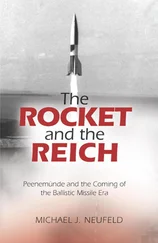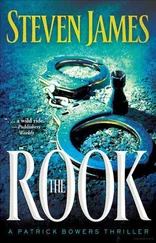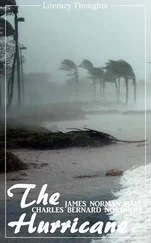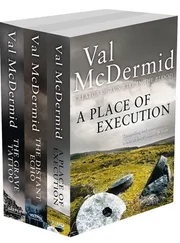James Becker - Echo of the Reich
Здесь есть возможность читать онлайн «James Becker - Echo of the Reich» весь текст электронной книги совершенно бесплатно (целиком полную версию без сокращений). В некоторых случаях можно слушать аудио, скачать через торрент в формате fb2 и присутствует краткое содержание. Жанр: Триллер, на английском языке. Описание произведения, (предисловие) а так же отзывы посетителей доступны на портале библиотеки ЛибКат.
- Название:Echo of the Reich
- Автор:
- Жанр:
- Год:неизвестен
- ISBN:нет данных
- Рейтинг книги:3 / 5. Голосов: 1
-
Избранное:Добавить в избранное
- Отзывы:
-
Ваша оценка:
- 60
- 1
- 2
- 3
- 4
- 5
Echo of the Reich: краткое содержание, описание и аннотация
Предлагаем к чтению аннотацию, описание, краткое содержание или предисловие (зависит от того, что написал сам автор книги «Echo of the Reich»). Если вы не нашли необходимую информацию о книге — напишите в комментариях, мы постараемся отыскать её.
Echo of the Reich — читать онлайн бесплатно полную книгу (весь текст) целиком
Ниже представлен текст книги, разбитый по страницам. Система сохранения места последней прочитанной страницы, позволяет с удобством читать онлайн бесплатно книгу «Echo of the Reich», без необходимости каждый раз заново искать на чём Вы остановились. Поставьте закладку, и сможете в любой момент перейти на страницу, на которой закончили чтение.
Интервал:
Закладка:
The valley floor was still fairly open and level, the BMW bouncing over the uneven ground but having no trouble moving forward through the long grass and around the occasional clumps of small bushes that grew near the railway track. In the distance, over on the left-hand side of the valley, Bronson could see a group of small trees, and it looked to him as if the railway line passed fairly close beside them, while the slopes on both sides were quite heavily wooded.
A few minutes later, the car bounced past the group of trees Bronson had spotted. Just beyond them, the valley opened up even more. On the left they could see a few more of the houses at the edge of Ludwikowice, but their attention was drawn immediately to a huge building, deserted and derelict, standing right in the middle of the clearing.
“That’s the Fabrica,” Angela said, as Bronson stopped the car a few yards away. “I recognize it from the picture in the guidebook.”
It was big. A two-story structure, the upper floor apparently with a much higher ceiling height than the ground floor. The roof had obviously collapsed long ago, and the outer walls showed signs of damage by either a fire or perhaps even an explosion, pieces of old blackened wood visible among the heaps of bricks and masonry that surrounded the structure. The grass and vegetation growing over and around the building suggested old, rather than recent, damage.
“Maybe we should follow the railway track,” Bronson suggested, pointing over to the east of the clearing.
He steered the car in that direction, and within a few seconds found an unpaved path that had clearly been used by vehicles at some time, because it was wide enough for even a tractor to pass along it and drive through the clumps of bushes and trees. Then the path Bronson was following vanished, and he drove the car onto a large reinforced-concrete open space, maybe originally used as a parking area, and there, at the end, stood the Henge.
The structure was huge, and bizarre. More than anything else, it resembled a concrete cage, vertical pillars arranged in a circle and topped with equally massive horizontal bars, like some modern but marginally more delicate version of Stonehenge.
“I’ve never seen anything like that before,” Bronson muttered.
“People claim that it’s unique,” Angela said. “It’s known as either the Flytrap or the Henge, and nobody knows for certain exactly what it was used for. There’s the suggestion that the Nazis had designed some sort of circular aircraft, and that the structure was used as a kind of containment area to support the vehicle during testing. There are huge ducts under the Henge, which were probably used to run power cables up to whatever was inside it.”
She paused. “That’s one explanation.”
The way she spoke made Bronson look at her.
“And the other?” he demanded.
“All you have to do is look at it from the other direction,” she said. “Because, actually, you have seen something like this before.”
Bronson shook his head. “I haven’t,” he insisted. “I’d remember if I had.”
He looked back at the structure. There were eleven columns in all, evenly spaced, and it was about thirty yards across, he estimated, which meant a circumference of roughly ninety yards.
“The clue is those bolts you can see on the top of the circle of concrete above the pillars,” Angela said.
Bronson looked where she was indicating, and could clearly see a heavy-duty bolt sticking upward directly above each of the vertical columns.
“Some people have theorized that they were used to support something being tested inside the Henge, but that doesn’t really make sense. If that were the case, surely the bolts would have been positioned on the inside of the structure, not on the top. Because the Germans stuck the bolts there, I think it’s reasonable to assume that they intended to attach something to the top of the Henge, or actually did so.”
“Like what?” Bronson asked.
“Like a sheet-metal cylinder.”
“What?”
“I think the simplest and most logical explanation for the Henge is that it was the base of a power station cooling tower, the same sort of structure you’ll see at any power station today. Think about it: the Fabrica is only a few dozen yards away, and was obviously manufacturing something-nobody knows what-but it would definitely have needed a source of power. And some parts of the Wenceslas Mine produced coal, so there was a fuel source nearby.”
Angela paused and pointed at some concrete blocks that lay on the flat land below the slight rise where the Henge was positioned.
“I believe that if you’d visited this plant during the Second World War, you’d have seen a coal-fired power station running down there, on those foundations, with the cooling tower right here. Cables would have been run in underground conduits from the power station over to the Fabrica building, and that would be the obvious explanation for something that is otherwise almost inexplicable.”
Bronson nodded. What she’d said made sense-certainly much more sense than any suggestion that the Nazis had developed and been test-flying some kind of saucer-shaped craft. That, he believed, could not have been kept secret during, and certainly not after, the war. Somebody, somewhere, would have seen something or even taken a picture of it.
“So do you mean we’re just wasting our time here?” he asked.
“Definitely not. I’m reasonably certain I know the exact purpose of the Henge, but the Bell is something else. And, actually, if I’m right and the Henge was a power station cooling tower, that reinforces the story of Die Glocke, because every account of its operation stresses the fact that it needed huge quantities of power.”
Bronson nodded.
“So where do we go now?” he asked.
Angela pointed downward.
“According to the few surviving records, the Henge was built on the hillside almost directly above the chamber where Die Glocke was positioned. That’s also the reason for the ducts various people reported. They just had things the wrong way round. The ducts did carry power cables, but the power wasn’t being sent from the Wenceslas Mine up to some futuristic craft being tested inside the Henge, but from the power station up here down into the cave to power the Bell.”
“So somewhere around here there has to be a way into the caves in the ground we’re standing on?” Bronson suggested.
“Exactly. So let’s go and find it.”
39
26 July 2012
It had sounded easy enough when Bronson said it, but finding their way into the cave complex of the Wenceslas Mine proved to be far more difficult than either of them had expected.
One of the first and biggest problems was simply finding any trace of the mine entrance because of the considerable growth of trees, bushes and undergrowth that had occurred over the decades. The shape of the ground had been softened and altered by weathering and the passage of time, and although they were able to use the railway line as a guide-because Angela had discovered that during the war a spur had linked the mine entrance to the main line-it still took them over half an hour to find anything that even resembled a mine entrance.
And when they did find it, it wasn’t much help.
“There’s an entrance over here,” Angela called out. “At least, I think it’s an entrance.”
Bronson trotted over to where she was standing.
At first sight, what she was looking at didn’t appear much different to the rest of the rock face. They had been searching in the area between the remains of the railway track and the plateau upon which the Henge stood, studying a fairly steep slope about thirty feet high. It was mainly rock, except where rough grass and the occasional stunted bush grew in the cracks where there was just enough soil for the roots to gain purchase. At the foot of the slope, large boulders and smaller rocks lay scattered on the ground, where they’d fallen over the centuries.
Читать дальшеИнтервал:
Закладка:
Похожие книги на «Echo of the Reich»
Представляем Вашему вниманию похожие книги на «Echo of the Reich» списком для выбора. Мы отобрали схожую по названию и смыслу литературу в надежде предоставить читателям больше вариантов отыскать новые, интересные, ещё непрочитанные произведения.
Обсуждение, отзывы о книге «Echo of the Reich» и просто собственные мнения читателей. Оставьте ваши комментарии, напишите, что Вы думаете о произведении, его смысле или главных героях. Укажите что конкретно понравилось, а что нет, и почему Вы так считаете.












